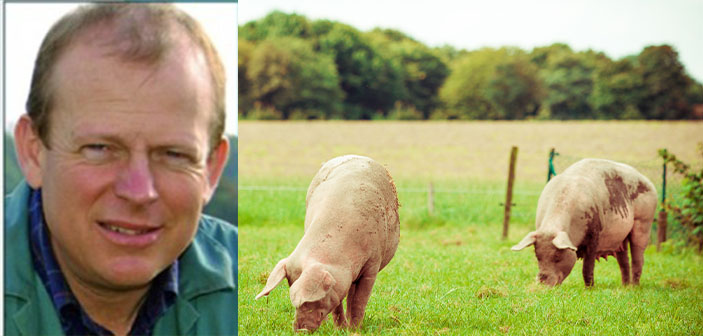East Anglia outdoor pig producer, Chris Fogden discusses why a holistic approach is needed to the hot topics facing the British pig sector.
There appears to be a glut of hot topics at the moment to try and make some sense of. These include the debate about the future of Red Tractor driven by that organisation’s unsatiable desire to keep ramping up the rules across all sectors, the results of various sector votes about the future of the AHDB, the ongoing conversation about climate change and the role of agriculture – is it a) a massive polluter? or b) part of the solution? – and allied to that, alternative animal feed protein sources to imported soya bean meal.
The danger is that all of these get looked at in isolation when a more holistic approach might be more valid. For example, the law of unintended consequences came in to play when neonicotinoid seed dressings were banned for use on oilseed rape – this led to a massive reduction in the acreage of that crop and a consequent reduction in supply of home-grown rapemeal, which is a very good substitute for soya bean meal.
Those driving the debate about the carbon footprint of meat production would have it that all farmed animals should spend their lives gambolling in sun-drenched meadows, while at the same time saving the planet. Whereas the truth is that the lowest carbon footprint meat production comes from intensive broiler production, closely followed by intensive pig production – not only that, these two sectors show continual improvement in productivity and consequent reduction in carbon footprint and we can be very proud of it.
That’s not to say that I don’t think that the currently in vogue ‘regenerative agriculture’ doesn’t have a lot to contribute. The latest findings on the highly complex natural processes that can occur in healthy soils are fascinating and highly relevant as the soil’s microbiome has strong links with the gut microbiome of animals and humans and has a huge influence on the health of all species.
Again, a holistic approach is what is needed, looking at the desired overall outcomes and how we can get there rather than blundering along overcoming each hurdle as it arises.
I had my just desserts for all of the pigs that have been vaccinated over the years, either by me or on my behalf, and had my first Covid vaccination in late March.
I must admit to it knocking me back for a bit, not helped by a hard morning’s weaning and piglet jabbing a day or two later.
The vaccination centre was running with commendable efficiency. I was told, though, that the nurse that vaccinated me had administered a hundred vaccinations on her best day – I didn’t ask her what she had been messing about at as she had still to shove the needle in me.
I have heard that a retired vet is a vaccination volunteer, carrying out injections at our local centre and I know a retired GP that is volunteering at another vaccination centre – but he has been put on car parking duties.
This article was taken from the May issue of Pig World magazine which you can subscribe to here.




